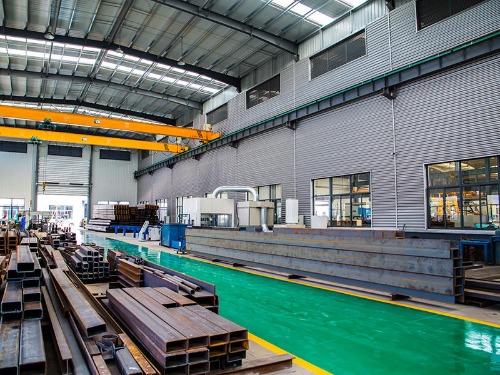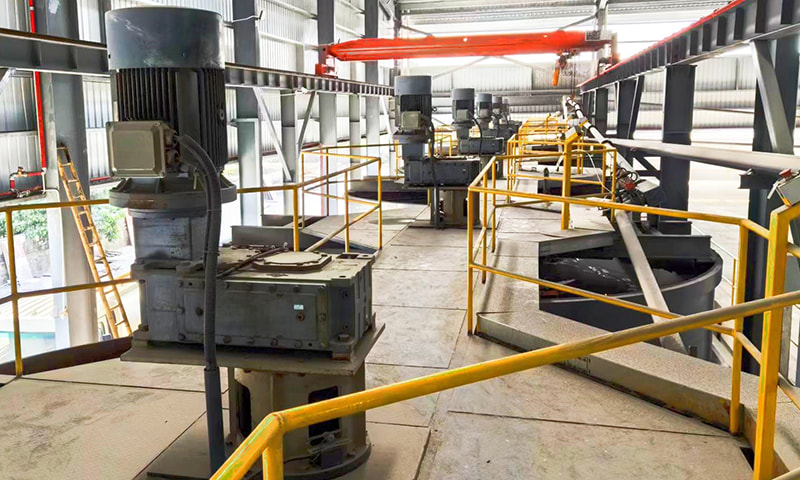The current status and challenges of lightweight block equipment
Traditional light block machine faces severe energy consumption problems during production. Taking steam maintenance technology as an example, the average energy consumption per cubic meter of lightweight blocks produced by ordinary equipment is as high as 80-100kWh, of which the maintenance process accounts for more than 60% of the total energy consumption. At the same time, the power consumption during the vibration forming stage is also considerable, especially the continuous operation of high-power vibrating motors has caused a lot of energy waste. These high energy consumption problems not only increase production costs, but also contrary to the current global trend of energy conservation and emission reduction.
In terms of production capacity, traditional light block machine also has obvious bottlenecks. Most of the daily output of stand-alone machines hover around 200-300 cubic meters, the forming cycle generally takes 30-45 seconds, and the maintenance time is as long as 12-24 hours. This inefficient production model is difficult to meet the growing market demand, especially during the centralized supply of large-scale construction projects, the problem of insufficient production capacity is particularly prominent. How to break through these limitations and achieve a win-win situation between low energy consumption and high production capacity has become a technical problem that equipment manufacturers need to solve urgently.

Innovative design to achieve key technologies for low energy consumption
The modern light block machine has significantly reduced production energy consumption through a number of innovative designs. The innovation of thermal engineering systems is one of the most important breakthroughs. The new equipment adopts step-by-step waste heat recovery technology to increase the heat utilization rate to more than 85%. The phase change energy storage and maintenance system developed by some leading companies uses the characteristics of special materials to absorb/release heat during the phase change process, reducing maintenance energy consumption by about 40%.
The optimized design of the vibration system also brings significant energy saving effects. The latest generation of light block machine uses multi-point collaborative vibration technology controlled by frequency conversion, which automatically adjusts the vibration frequency and amplitude according to the material state. Compared with traditional fixed frequency vibration, it can save 30%-50% of electricity. The introduction of electromagnetic direct drive vibration device further improves the energy conversion efficiency and eliminates energy loss in mechanical transmission.
The application of intelligent temperature control system has improved the energy-saving system. A distributed temperature monitoring network based on IoT technology can accurately control the temperature gradient of the maintenance environment and avoid overheating or underheating common in traditional maintenance methods. Experimental data show that this precise temperature control can reduce steam consumption by more than 25%, while shortening the maintenance time by 15%-20%.
Mechanical design and process innovation that improves production capacity
In terms of capacity improvement, light block machine’s innovative design is mainly reflected in three major areas. The modular rapid mold change system completely changes the disadvantages of the time it takes to replace product specifications in traditional equipment. Through standardized mold interfaces and hydraulic locking mechanisms, the product switching time is shortened from the original 2-3 hours to within 15 minutes, and the equipment utilization rate is increased by more than 30%.
The breakthrough in continuous forming technology has greatly improved production efficiency. The latest developed roller moldinglight block machine can achieve uninterrupted production, shortening the molding cycle to 8-12 seconds, and the daily production capacity of a single machine exceeds 600 cubic meters. This technology adopts a special material rheological design to ensure that product compactness and dimensional accuracy can still be guaranteed during high-speed molding.
Revolutionary innovation in the maintenance process is the key to improving overall production capacity. The application of microwave-assisted maintenance technology has increased the initial strength development speed of lightweight blocks by 3-5 times, and the maintenance time is compressed to 4-6 hours. The carbonization curing process used by some advanced equipment uses CO2 in industrial waste gas to accelerate the reaction of gelled materials, and shortens the curing cycle by 60% while improving product performance.
Intelligent control system achieves balance between energy efficiency and production capacity
The modern light block machine intelligent control system provides strong support for achieving low energy consumption and high productivity. The adaptive production scheduling system automatically optimizes the production rhythm by monitoring equipment status and energy consumption in real time. Automatically reduce energy consumption of non-critical processes during peak electricity consumption, and full production during lows. This intelligent adjustment can increase the overall energy efficiency by 15%-20%.
The predictive maintenance system detects potential equipment failures in advance through vibration analysis, temperature monitoring and other means. Data shows that this maintenance method can reduce accidental downtime by more than 70%, and increase the overall equipment efficiency (OEE) to about 85%. The addition of remote diagnosis function further improves the response speed of problem and reduces the average fault processing time by 50%.
The closed-loop control system of quality realizes automatic optimization of production parameters. By testing the key indicators of the finished product online, the system can reversely adjust the parameters such as raw material ratio and molding pressure, and continuously optimize the energy efficiency ratio while ensuring quality. Data from a well-known manufacturer shows that this system can reduce energy consumption per unit product by 8%-12%, while reducing the waste rate by 3-5 percentage points.
Future development trends and market outlook
With the continuous advancement of technology, there is still room for improvement in the energy efficiency and production capacity of light block machine. The new electromagnetic levitation vibration technology is expected to reduce vibration energy consumption by another 40%, while the application of graphene heating elements may double the maintenance efficiency. The in-depth application of digital twin technology will realize virtual optimization of equipment operation and further tap the potential for energy conservation and production increase.
In terms of market demand, it is expected that the global light block equipment market size will reach US$5.2 billion by 2028, of which the high-efficiency and energy-efficient light block machine will dominate. The rapid urbanization process of developing countries and the demand for energy-saving building transformation in developed countries jointly promote the sustained market growth. Innovative equipment that can meet the requirements of low energy consumption and high production capacity at the same time will have a clear advantage in future market competition.
Through continuous technological innovation and intelligent upgrades, modern light block machine* has achieved dual breakthroughs in energy efficiency and production capacity. This not only reduces production costs and improves market competitiveness, but also makes important contributions to the green transformation of the construction industry. In the future, with the application of new materials and the in-depth development of intelligent manufacturing, lightweight block equipment will surely usher in broader development prospects.






